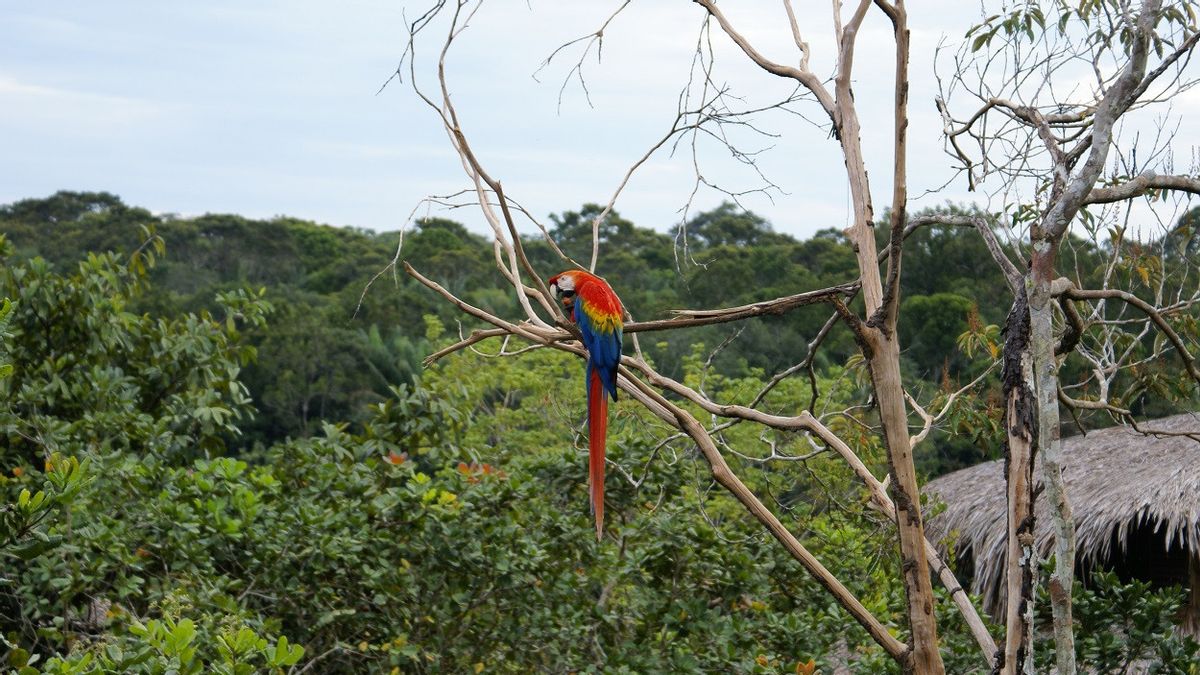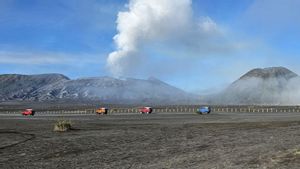JAKARTA - More than 10,000 plant and animal species are at high risk of extinction due to the destruction of the Amazon rainforest, 35 percent of which have been logged or degraded, according to a draft scientific report published on July 14.
Produced by the Science Panel for the Amazon (SPA), this 33-chapter report brings together research on the world's largest rainforest from 200 scientists worldwide. This is the most detailed assessment of the state of the forests to date, highlighting the important role the Amazon plays in the global climate and the enormous risks it faces.
Cutting deforestation and forest degradation to zero in less than a decade is 'very important', the report said, calling for the massive restoration of already devastated areas.
Rainforests are important bulwarks against climate change for both the carbon they absorb and what they store. According to the report, the soil and vegetation of the Amazon store about 200 billion tonnes of carbon, more than five times the world's annual CO2 emissions.

Furthermore, the continuing destruction caused by human intervention in the Amazon places more than 8,000 endemic plants and 2,300 animals at high risk of extinction, the report said.
Science shows that humans face potentially irreversible and catastrophic risks from various crises, including climate change and the decline of biodiversity, said University of Brasilia professor Mercedes Bustamante, Brazil during a virtual panel discussion.
"There is a narrow chance to change this trajectory. The fate of the Amazon is at the core of the solution to the global crisis," Bustamante said as quoted by Reuters on July 15.
In Brazil, deforestation has soared since far-right President Jair Bolsonaro took office in 2019, reaching a 12-year high last year and drawing international condemnation from foreign governments and the public.
President Bolsonaro has called for mining and agriculture in protected areas of the Amazon, weakening environmental enforcement agencies, which environmentalists and scientists say has directly resulted in increased damage.
Brazil's neighbor Colombia a week ago reported that deforestation rose 8 percent in 2020 compared to the previous year to 171,685 hectares (424,000 hectares), with nearly 64 percent of the damage occurring in the country's Amazon region.
Former Colombian President Juan Manuel Santos lamented the lack of political will from among Amazonian countries to address the problems facing the rainforest.
"Unfortunately right now in Latin America and especially in these eight countries, you don't see that political leadership, you don't see a president taking the baton," he said, referring to countries bordering the Amazon rainforest.

At its original size, 18 percent of the Amazon basin has been cleared, according to the report, mostly for agriculture and illegal timber, while another 17 percent has been degraded.
While restoration efforts will play an important role in safeguarding the Amazon, the difficulty of restoring forests means that the main goal is to protect existing vegetation and water bodies.
"Restoration measures can be expensive and complex to implement, so it's actually better to avoid deforestation and degradation, so we don't have to take restorative action," said Marielos Pena-Claros, professor at the University of Wageningen in the Netherlands.
Continued destruction could threaten the ability of rainforests to function as carbon sinks, with potentially damaging outcomes for global climate change.
Separately, a separate study published in the journal Nature at the same time showed that parts of the Amazon emit more carbon than they absorb, based on measurements of carbon dioxide and carbon monoxide taken from above the rainforest between 2010 and 2018.
Lead author Luciana Gatti, a scientist at Brazil's Inpe space research institute, suggests increasing carbon emissions in southeastern Amazonia, where deforestation is severe, not only as a result of fire and direct destruction, but also due to increased tree mortality due to severe droughts and warmer temperatures height is becoming more common.
The English, Chinese, Japanese, Arabic, and French versions are automatically generated by the AI. So there may still be inaccuracies in translating, please always see Indonesian as our main language. (system supported by DigitalSiber.id)













